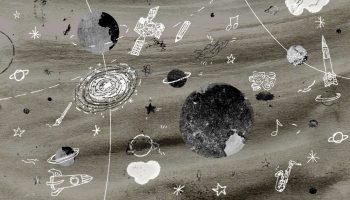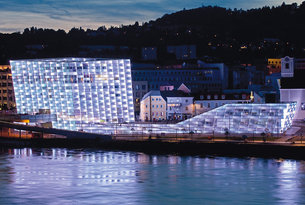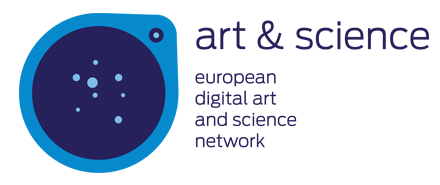Space science is a domain perhaps as vast as the cosmos it investigates.

Artist’s impression of stars, planets and an active galaxy. Credit: ESA/ATG medialab
The advent of space telescopes, augmented eyes to see what we cannot observe from Earth, and space probes, emissaries to worlds other than our own, has opened new windows on our study of the Universe. These technical marvels have allowed us to unveil major clues to piece together the 13.8 billion-year history of the Universe, from the formation and evolution of stars and galaxies to the birth of our own Solar System.
Investigating our cosmic origins is a major theme in the Space Science Programme of the European Space Agency (ESA), which operates a fleet of spacecraft that allow European scientists to be at the frontier of astrophysics, planetary science, solar and fundamental physics.
It is sometimes easy to forget, while caught up in the daily duties of scientific research, that space science tackles questions that spark curiosity at a deeper, more fundamentally human level. These questions concern the very essence of our existence on this planet – not merely as individuals but as part of a cosmic tale that started eons before us and that will continue long after we are gone.
These questions do not pertain exclusively to science, but are central to many other domains of culture and research, and in particular to the arts.

When art and space science meet. Credit: ESA
In recent years, in our role as communicators of ESA’s Space Science Programme to the broader public, we have met and interacted with a number of artists who had been inspired by ESA’s missions, by their results and by the vision that brought them about. These artists wanted to learn more, to probe the scientific and technological processes that enable the spirit of enquiry to leave Earth’s gravitational pull to research the Universe from space.
During these interactions, we appreciated the variety of perspectives that artists have on the scientific endeavour and were intrigued by how their curiosity is triggered by aspects that may differ from those pursued by scientists. These perspectives often provide refreshing insights into the science of the cosmos.
On top of that, this year saw the launch of the first ESA–Ars Electronica artistic residency, an initiative organised by Ars Electronica in partnership with ESA and the European Digital Art and Science Network. The goal of this project is to research the common ground between art and space science through an artistic residency, to be spent partly at ESA’s European Space Research and Technology Centre (ESTEC) in Noordwijk, the Netherlands, and partly with the creative team at Futurelab in Austria.

Once Upon A Fraction of Time. Credit: Aoife van Linden Tol
A total of 139 applications were submitted for the residency. Aoife van Linden Tol, an artist working primarily with explosive media, was selected as the first recipient of this residency, with her proposed Star Storm project, a spectacular performance inspired by the physical processes that characterise the life of stars.
In addition, the jury also identified another promising and inventive project: The Wandering Artist, submitted by American kinetic artist and roboticist Sarah Petkus, awarding her an honourary mention and inviting her to spend time with ESA’s planetary scientists and robotic experts in Noordwijk, and later with the Futurelab team at Ars Electronica.
This blog will provide a space for the artists that have been (and will be) collaborating with us, via the ESA–Ars Electronica residency as well as through independent initiatives, to describe their research and experience, and promote further reflections on the exciting overlap between art and space science.
Stay tuned!




Discussion: no comments